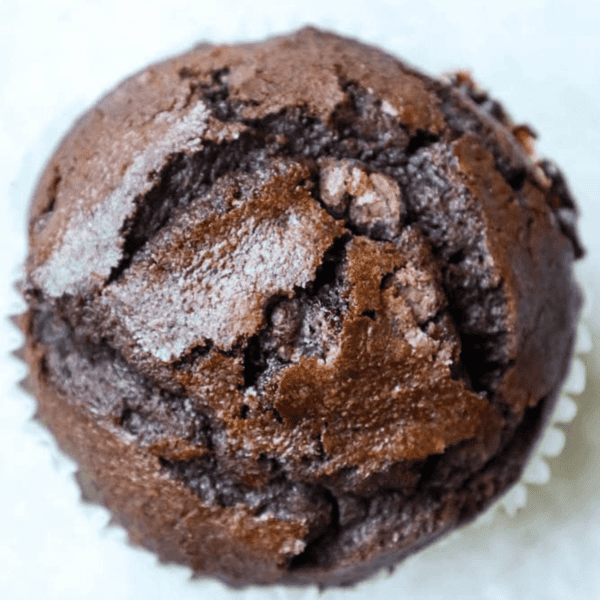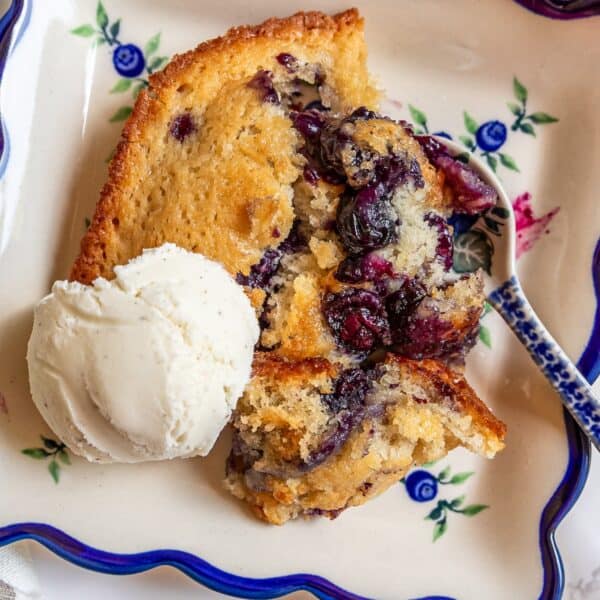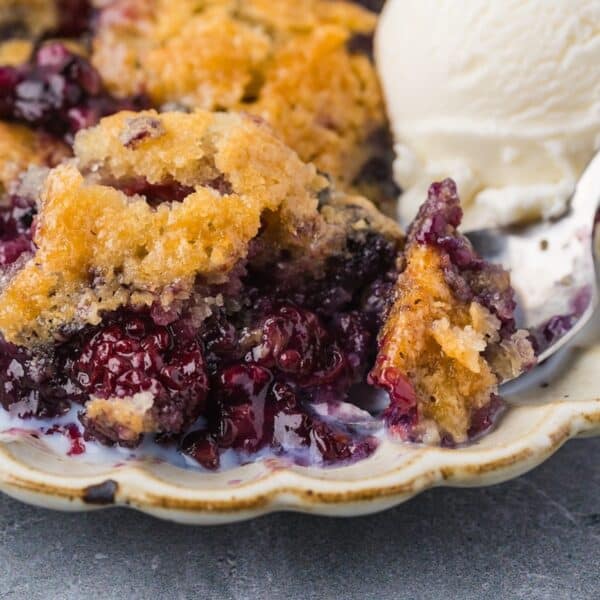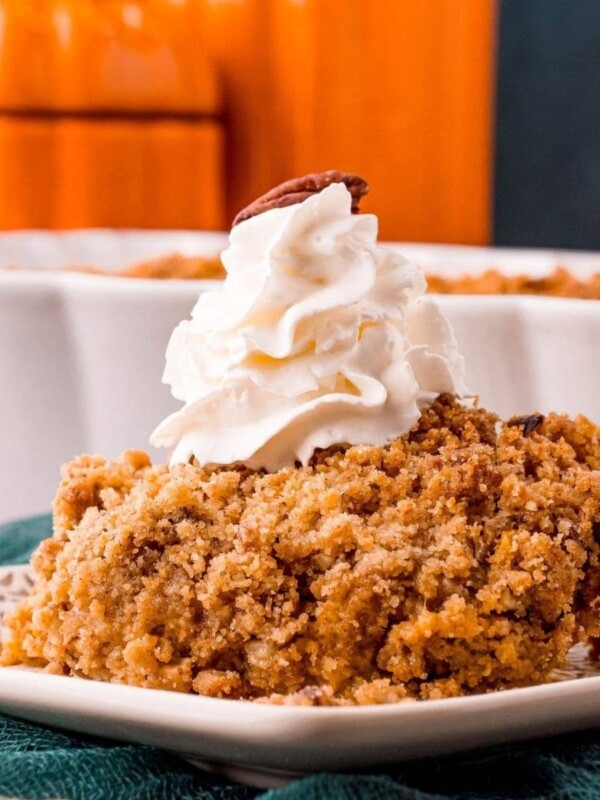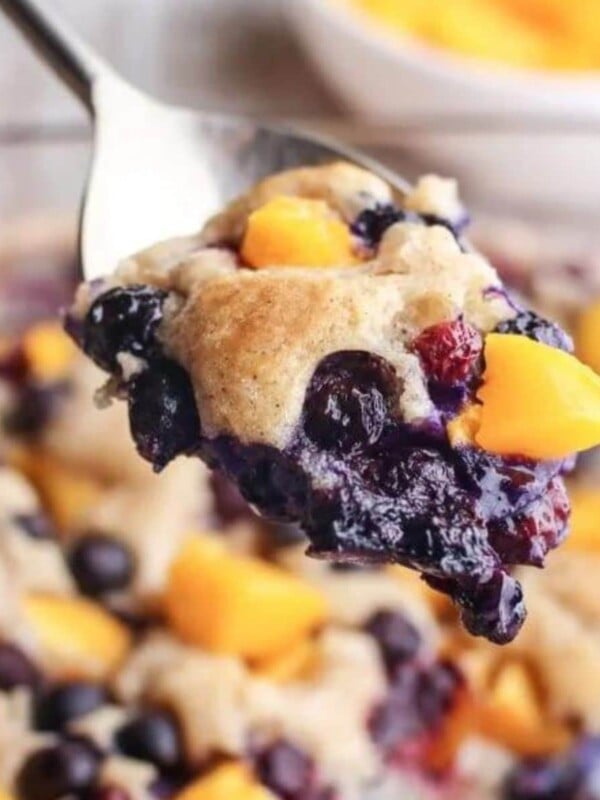This post contains affiliate links. Please read our disclosure policy.
My sourdough peach cobbler is authentically Southern, with juicy peaches bubbling beneath a golden, tangy sourdough topping. It’s rich, comforting, and full of old-fashioned flavor came straight from my Great-Grandma’s family cookbook.




Don’t want all the extras in a recipe post? We provide a skip to recipe button in the top left corner, as well as a clickable table of contents, just below, to help make this page easier to navigate.
At Sweet C’s, I add lots of tips in all of my recipes – because I am a home cook without any formal training, and I find I am more confident making dishes when I understand why it works, and what each ingredient means to the flavor of a recipe. My goal is for even the most beginner home cook to feel empowered in the kitchen.
Table of Contents
How to Make Sourdough Discard Peach Cobbler
This sourdough discard peach cobbler starts the Southern way – my great-grandmother’s way – by melting butter in a hot cast iron skillet until it sizzles. The tangy, tender batter made with sourdough discard (my modern addition) is poured right over the bubbling butter, creating crispy edges and a soft center.
Sourdough Discard Peach Cobbler Ingredients
First assemble the following ingredients:
- Butter (1/2 cup) – Melted butter forms the rich, buttery base that helps create a golden, crisp edge on the cobbler.
- Sugar (1 cup) – White sugar sweetens the batter and balances the tartness of the sourdough.
- All-purpose flour (1 cup) – Flour provides structure to the cobbler topping, yielding a soft and cakey texture.
- Baking powder (2 teaspoons) – Baking powder helps the cobbler rise and become light and fluffy.
- Salt (1/4 teaspoon) – A pinch of salt enhances the flavor and balances the sweetness.
- Milk (3/4 cup) – Milk adds moisture and helps create a pourable batter.
- Sourdough discard (1/3 cup) – The discard adds a subtle tang and helps tenderize the cobbler.
- Vanilla extract (1 teaspoon) – Vanilla brings warmth and depth to the flavor of the batter.
- Peaches (3) – Fresh, sliced peaches provide juicy, sweet fruit that shines as the cobbler’s centerpiece.
- Brown sugar (1/4 cup) – Brown sugar adds caramel-like sweetness and richness to the fruit layer.
Discard Peach Cobbler Process
Once you’ve gathered your ingredients, we will use the following method:
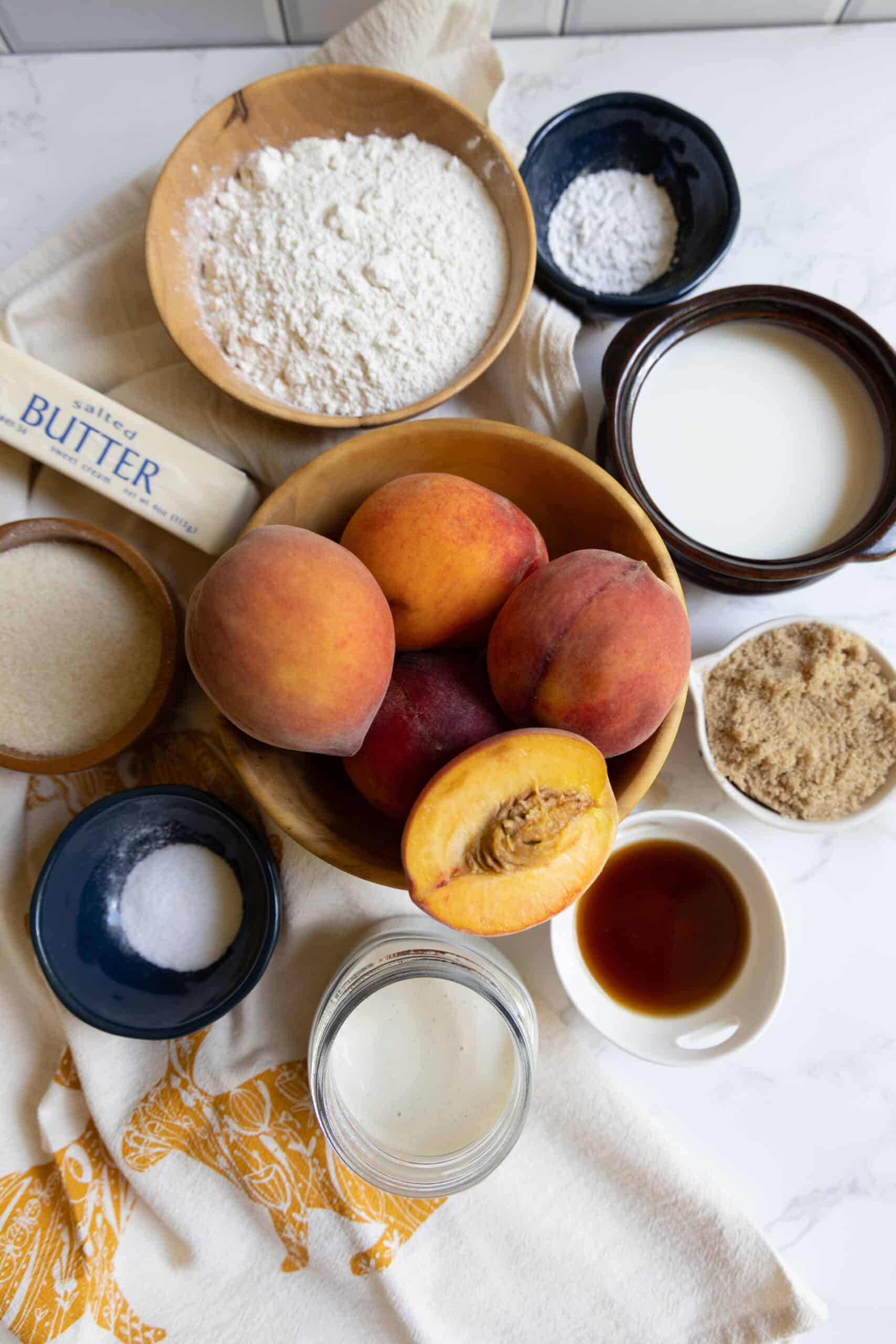
Prep Ingredients
Slice your peaches and preheat the oven to 350 degrees.

Melt Butter
Place the butter in a 12-inch cast iron skillet and place it in the oven until the butter melts. Remove from the oven and set aside.
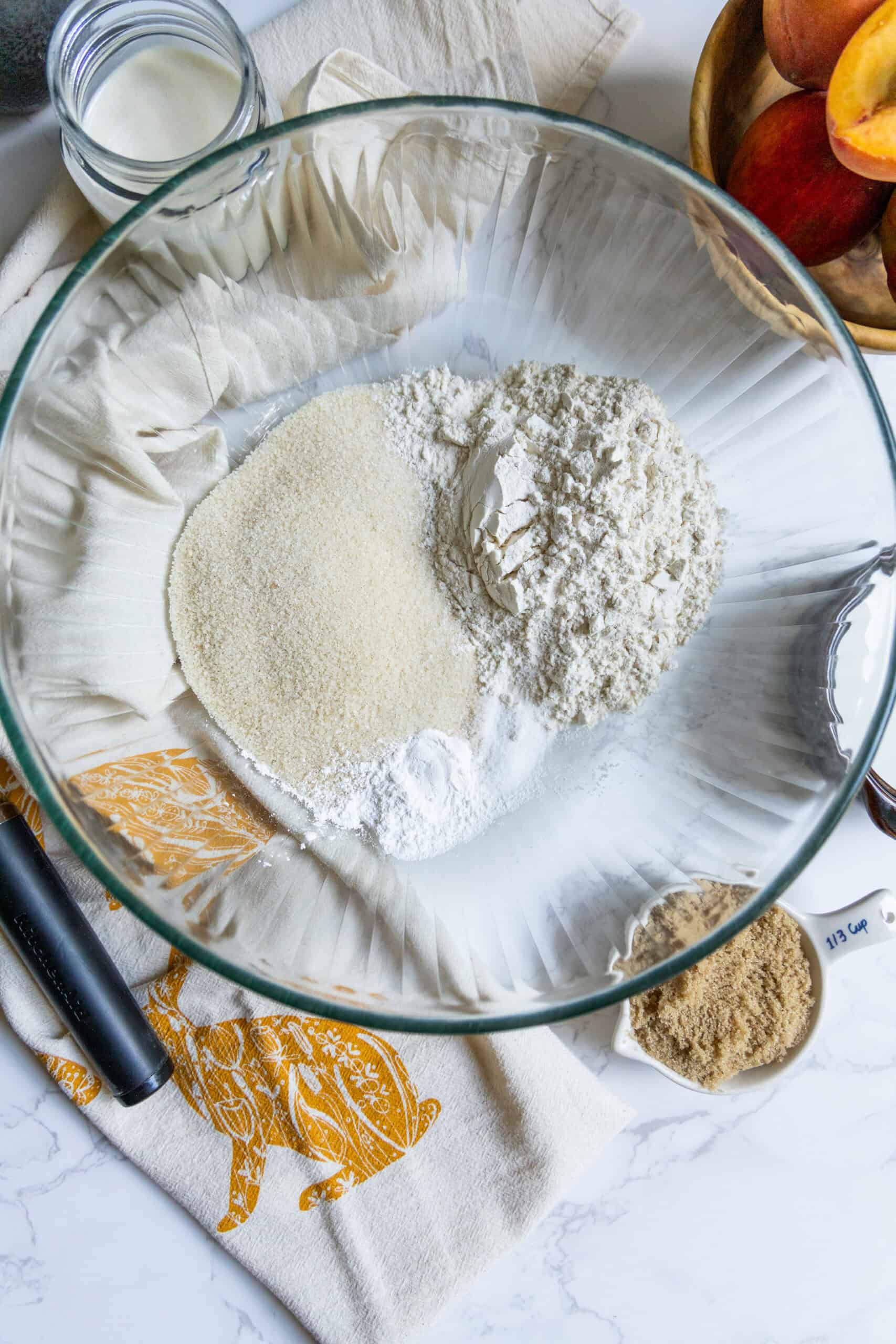
Mix Batter
Combine all the dry ingredients then add the milk, vanilla, and sourdough discard, mix until just combined.
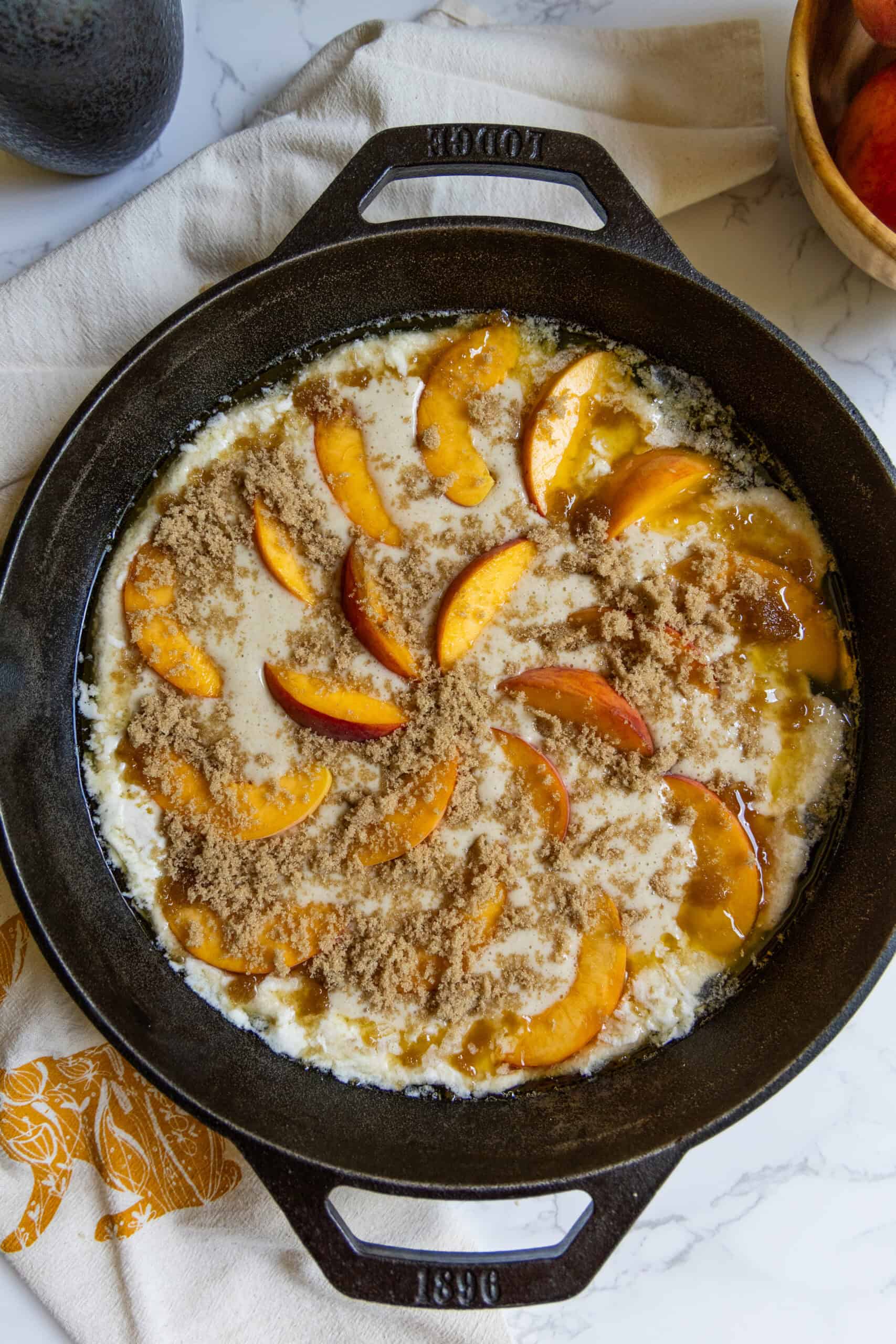
Pour, Sprinkle, Bake
Pour the batter over the melted butter, do not stir! Add the peaches directly on top of the batter and bake for 40 minutes or until browned on top and a toothpick comes out clean. Enjoy with ice cream or whipped cream!
Tips and Tricks to Perfect Peach Cobbler
Use ripe but firm peaches – They hold their shape better during baking and offer the best flavor.
Peel the peaches for smoother texture – Blanch them briefly in boiling water to make peeling easier.
Macerate the peaches – Toss with a bit of sugar and let sit for 10–15 minutes to draw out juices and intensify flavor.
Use active or discard sourdough – Discard adds tang, while active starter can provide more rise and chew.
Don’t overmix the batter – Stir just until combined to keep the topping tender.
Preheat the oven fully – This ensures a good rise and golden color.
Place a baking sheet underneath – Catch any bubbling fruit juices that might overflow.
Let it rest after baking – Cool for 15–20 minutes to allow the cobbler to set and the flavors to meld.
Serve with ice cream or whipped cream – The creamy contrast enhances the warm, tangy-sweet dessert.
FAQs
Yes, just drain canned peaches well or thaw and pat dry frozen ones to avoid excess moisture.
Peeling is optional, but it creates a smoother texture; leave the skins on for a more rustic feel.
Yes, active starter works fine and may yield a slightly fluffier topping.
No, it adds a subtle tang that complements the sweetness of the peaches without overpowering.
You can substitute with plain yogurt or buttermilk in equal amounts for a similar tang.
It’s done when the top is golden brown and a toothpick inserted in the center comes out clean.
Yes, bake it earlier in the day and reheat in the oven at 300°F for 10–15 minutes before serving.
Cover and refrigerate for up to 3 days; reheat in the oven or microwave before serving.
Yes, freeze fully baked and cooled cobbler for up to 2 months; thaw overnight in the fridge and reheat before serving.
Try These Favorite Desserts Next
If you love this easy recipe please click the stars below to give it a five star rating and leave a comment! Pease also help me share on Instagram, Facebook, and Pinterest!
Share on Facebook
SharePin this now to find it later
Pin ItFollow on Instagram
Only have 30 minutes to get dinner on the table? Sign up for my 30 minute dinner plans direct to your inbox!
Find and shop my favorite products in my Amazon storefront here!
Sourdough Peach Cobbler
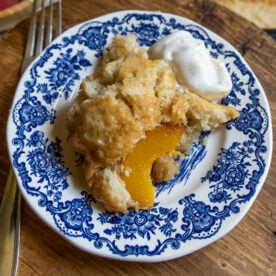
Equipment
Ingredients
- ½ cup butter
- 1 cup sugar
- 1 cup all-purpose flour
- 2 teaspoons baking powder
- ¼ teaspoon salt
- ¾ cup milk
- ⅓ cup sourdough discard
- 1 teaspoon vanilla extract
- 3 peaches, peeled and sliced
- ¼ cup brown sugar, packed
Instructions
- Preheat oven to 350 degrees. Place butter in a 12-inch cast iron skillet and melt butter in preheating oven, takes about 5 minutes. Remove pan from oven when butter is melted and set aside.
- In a large bowl, mix sugar, flour, baking powder, and salt. Whisk together.
- Add milk, sourdough discard, and vanilla and mix by hand until just incorporated. Do not over mix.
- Pour cobbler batter into the pan over the melted butter. Do not mix. Top with sliced peaches and sprinkle the brown sugar on top.
- Bake for 40 minutes at 350 degrees. The top should be golden brown. Allow to cool for 20 minutes then serve with ice cream or store at room temperature.
Notes
Nutrition
Nutrition information is automatically calculated, so should only be used as an approximation.

